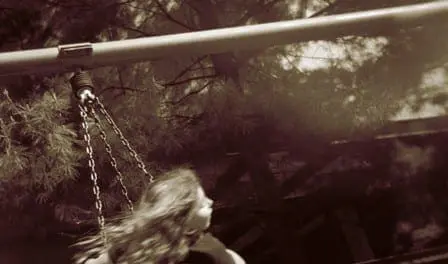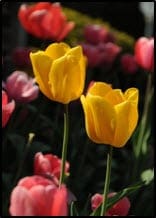DPA Magazine
Family Photography-19
Using a flash with slow shutter sync, allows am impressionistic image of the first day of school. The flash freezes the child while dad’s kiss on the head is the blurry action.
Family Photography-20
Late day sun – the golden hour – and backlighting give this image a dreamlike quality that heightens the emotionality of the girls’ postures.
Family Photography-21
Sometimes a seemingly random photo of a typical day can capture the chaos and humorous moments of life. Even the cropped child in the foreground is an important feature of the composition to symbolize the quirkiness.
Family Photography-22
A medium to slow shutter speed permits the motion of the photo to convey the carefree energy of activity and the delight of the child on the swing. Gesture and facial expression are very important.
Family Photography-23
Using back light gives a tenderness to the image. Eye contact between the father and daughter is also crucial in conveying emotion. The father figure is well characterized by his tie, suit vest by the briefcase on the floor.
Family Photography-24
Using evaluative or matrix metering, freeze a silhouette to create a timeless graphic narrative.
Flowers-6
Take lots of shots. Digital “film” is cheap. It’s easy to later weed out the culls -- and save the keepers
Flowers-5
You can pick them from your garden and bring them in, borrow them from that birthday flower arrangement or buy a small bunch from the local grocer. A piece of putty (or even chewing gum!) can secure the stem and a “busy” background of fabric placed two or three feet behind the flower can serve as a dreamy background. Indoor shooting also offers wind-less conditions, and may offer easier options in changing the angle and rotation of the flower and creative control of the light coming through a nearby window, or add an artificial light source. Create an abstract using a group of flowers. Set camera to shutter priority and select a long shutter speed (about 1/4 to 1/2 second) and try one of the following with a hand held camera: -Simply “jiggle” the camera as if you had very shaky hands, or -“Drag” the lens in a straight (or diagonal) line across the flower bed and click the shutter while the camera is moving, or -With your zoom lens at its longest position, rotate the lens barrel in and click the shutter during that movement, or -If your camera has a multiple exposure feature, turn it on and rapidly take a number of shots, moving the camera slightly between each shot.
Flowers-4
Outdoors, watch out for the wind (and try to block it from moving the flower, if possible). The slightest movement of the flower subject will be apparent in your image (unless a very high shutter speed is used). However, sometimes a “dreamy blur” of a moving flower can actually enhance the image! Consider using a hand-held reflector (as simple as a piece of white cardboard or gold or silver foil glued to card board) to enhance the lighting (usually from the side of) the flower opposite the main light source. This low-tech device is also handy to use as a small windbreak when held near the subject flower. The best quality of light for flower (and fall foliage) photography is overcast. Sunshine can make the flowers too contrasty and shadows harsh. Under a bright sun, consider using an umbrella or something similar to create shade.






